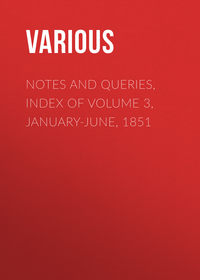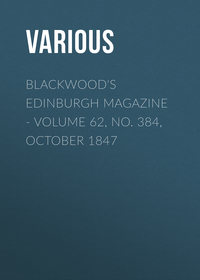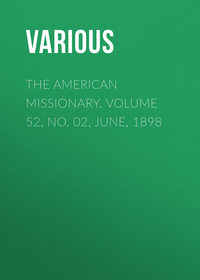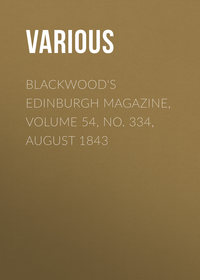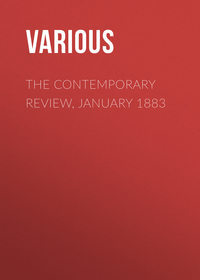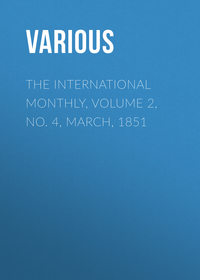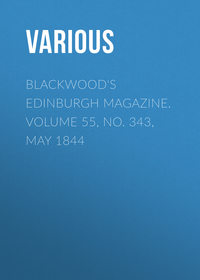 полная версия
полная версияAppletons' Popular Science Monthly, March 1899
Most of the frauds which have any continued success owe it, in part at least, to an undue faith in the personal integrity of the practitioner. It seems a rude as well as an unkind thing to suppose that So-and-so, whose demeanor is so modest and frank and simple, whose sentiments are so elevated, whose whole personality seems calculated to inspire confidence, is really an outrageous deceiver. In many cases people have said in effect that, if they had to choose between believing a miracle and doubting the veracity of this or that engaging individual, they would believe the miracle. Yet time and again the engaging individual has been proved to be an impostor, and the miracle has fallen to the ground. One of the most remarkable cases of the kind is furnished by the history of the Keeley motor, the absolutely fraudulent character of which has lately been brought to light. Keeley professed to transcend all the known laws of physics and mechanics, and he talked a jargon which all acknowledged to be unintelligible, but the unintelligibility of which was ascribed by his devotees to the fact that he was really working outside of known laws, and could not be expected to translate his ideas into the language of everyday science. In this way what was really an adjunct to the imposture he was practicing was counted as a proof of the truth of his ideas and the reality of his work. Yet now we know that the whole business was a matter of hidden tubes and wires and pulleys and double axles, one concealed within the other, with a water motor hidden under the floor. Thus it was that the "ætheric vibrations" and all the other mysterious phenomena were produced. We remember a sermon that was preached some years ago by an earnest divine, who professed to see in the alleged effects produced by Keeley an explanation of the miracle of the casting down of the walls of Jericho. Keeley would take his harmonium and, striking a certain chord, would cause his motor to revolve. In like manner Joshua with his trumpets and pitchers made precisely the kind of noise required to produce the ætheric vibrations necessary to level the walls of the beleaguered city – a wonderful case of the most advanced science coming to the support of a venerable religious tradition! Unfortunately, the walls of Jericho must now be got down in some other way, since it is proved that when Keeley worked the harmonium he also worked the bulb of an air tube placed under his foot in the floor. But Keeley was so honest a man, so devoted to his profound researches, so true a type of the indomitable experimenter, that it was impossible for his friends and admirers to doubt him, even when he spoke of "the sympathetic negative attraction of the triune polar stream."
The lesson of it all is – investigate! investigate! INVESTIGATE! The more honest a man is, the more he will court investigation. It is to the credit of humanity perhaps that so much reliance is placed upon estimates of personal character in these extraordinary cases; but where belief is demanded for anything that is absolutely beyond comprehension, character should be put out of court altogether, and the one question should be, What are the facts? In the Keeley case, unfortunately, men of science as well as others were among the deluded. They should have suspected fraud; at least they should have insisted on making such investigations as a suspicion of fraud would have suggested; and, if they were not allowed to make them, they should have refused all countenance to the business. As it is, many ignorant persons who lost money through Keeley's imposture will very properly cast blame on the presumedly competent mechanicians and physicists who went through the form of examining Keeley's apparatus and afterward spoke, however guardedly, of his extraordinary results. As an object lesson in regard to the need for uncompromising skepticism when facts which can not be accounted for on understood principles are presented for acceptance, the history of the Keeley motor should not soon be forgotten.
Scientific Literature
SPECIAL BOOKS
Professor Bailey shows, in his book on the Evolution of Our Native Fruits,43 that the value of the native American species has not yet begun to be adequately estimated, and his narrative carries the conviction that the possibilities to be realized from their development are totally undreamed of. De Candolle made the astounding assertion, in his book on The Origin of Cultivated Plants, that the United States only yields as nutritious plants worth cultivating the Jerusalem artichoke and the gourds. "They had a few bulbs and edible berries, but have not tried to cultivate them, having early received the maize, which was worth far more." "And yet," Professor Bailey answers, "the American grapes have given rise to eight hundred domestic varieties, the American plums to more than two hundred, the raspberries to three hundred, and various other native fruits have a large progeny." Three motives, the author says, run through his book: An attempt to expound the progress of evolution in objects which are familiar and have not yet been greatly modified by man; an effort to make a simple historical record from unexplored fields; and a desire to suggest the treasures of experience and narrative which are a part of the development of agriculture. The studies of which the book is a fruit were begun more than ten years ago, and were pursued with original sources where they were accessible, and at the cost of much labor and travel. The story begins with the grapes. The cultivation of native grapes, which are singularly abundant and various in the wild condition, began after several attempts on the large and on the small scale to make foreign grapes profitable had failed. Nicholas Longworth, of Cincinnati, who did more than any other one man to promote it, sought for wine grapes. After several varieties had been tried with more or less success, the Catawba and the Concord were introduced, and the cultivation was established and became important, but no longer with wine-making as its chief object. Now we have a large variety of grapes – characteristic, finely flavored, and adapted to numerous uses in wines and desserts. Plums are mentioned in the early records nearly as frequently as grapes. There are five native types from which diverse varieties have arisen, the greater part of them of fortuitous origin. The native cherries have not yet been very hopeful of promise, except the dwarf species, which seem "destined to play an important part in the evolution of American fruit." Five types of native apples are known, from which a number of named and worthy varieties have arisen, by Nature's propagation, not man's; and the author anticipates great benefits to be derived from the very gradual and undemonstrative insinuation of native blood into the domestic sorts. The story of the cultivation of the raspberries, blackberries, dewberries, strawberries, gooseberries, currants, and mulberries tells of much patience and skill applied to the production of results in the benefits of which all may share, and which have undoubtedly added to the sum of human well-being. There remain still many fruits, the improvement of which has hardly begun, and which offer a promising field for experiment – the persimmon, pawpaw, whortleberry, buffalo berry, barberry, and nuts. The whole history of the improvement of American fruit is interpreted by Professor Bailey as showing that in nearly every case the amelioration has come from the force of circumstances, and not from the choice or design of man, principally because foreign species did not do well and something adapted to American conditions had to be found. Yet much skill has been shown in recognizing the good qualities of the native species, and in giving them conditions favorable to improvement. For the future the author believes that the best results at the amelioration of any species are to be expected by working with the highly improved forms rather than with the original wild stock. We need, he says, a greater range of variation, more divergent and widely unlike varieties, and more incidental or minor strains of the most popular and cosmopolitan sorts. Professor Bailey finds the greatest satisfaction in his book in the record of the men who have been instrumental in introducing the improved fruits. No men have been greater benefactors to our country than these, who have done the equivalent of making two blades of grass grow where only one grew before, and have added to the healthful sum of pleasure and content.
As Professor Darwin truly says, a mathematical argument is, after all, only organized common sense; but, unfortunately, it is usually in such a highly organized form as to be beyond the intelligence of the average reader. In the present volume,44 however, the author has wonderfully simplified a most intricate and difficult mathematical subject, and really seems to give some justification for the above generalization.
The first chapter of The Tides is devoted to defining them and describing methods of observation and study. The curious tidal movements in lakes, called seiches, which were first systematically studied by Professor Forel on the Lake of Geneva, are taken up in the second chapter; an account of Forel's work is given, and the statement made that similar researches are now under way on other lakes, notably that of Mr. Denison on Lake Huron in this country. Tides in rivers, including an account of the curious tidal phenomenon known as a "bore," are next described, the laws governing their variation and the ways in which they differ from the tides of the open sea being carefully laid down. A brief historical chapter, containing some curious extracts from Chinese and Icelandic literature, is rather instructive anthropologically than tidally. The three following sections are taken up by a study of tide generating and modifying forces, and include an interesting account of the experiments made some years ago by Dr. Darwin and his brother, in an effort to measure tidal forces by means of the bifilar pendulum, which is now such an important agent in seismological investigation. Chapters IX and X give an account of the equilibrium, and the dynamical theories of the tide-generating forces, and are chiefly accounts of the devices by which mathematicians have endeavored to bring artificial order out of the actual chaos. The great complexity of this portion of the subject; the variety of forces operating to produce the tides, the sun, the moon, the earth's rotation, etc.; and the number of retarding and confusing elements, friction, interposed land masses, river currents, air movements, depth of water, etc., render these theories practically valueless for use in tidal calculations.
In the following section Dr. Draper shows how, by means of Lord Kelvin's "harmonic analysis," which separates the tide-generating forces of each kind into a number of ideal components, results of practical value are obtained. In Chapter XIII a very ingenious instrument for tide prediction which has been in use for some time by the Indian Government is described. The recording part of the machine is simply a paper-wound drum, on which a pencil point makes a graphic record. When the tides of a given port are desired, it is only necessary to set the instrument according to the tidal components, obtained by harmonic analysis and the time chosen for the beginning of the tide table, and then start it at the proper moment. It takes about four hours to run off the tidal curve for a year. This curve is then measured, and the year's tide table readily made out. Dr. Darwin informs us that a very similar instrument is now in course of construction for the United States Government. The remainder of the work consists of a more detailed discussion of the various disturbing influences which interfere with the simplicity of tidal movements – displacement of the earth's axis, earthquakes, etc, a long discussion of tidal friction, a study of the laws of rotating liquid masses, the nebular hypothesis, and finally a chapter on Saturn's rings. The text in many places will be found difficult to understand by the general reader, despite the author's efforts to fully and simply explain every point, and it seems questionable whether a thorough discussion of tidal phenomena can be made simple enough for the layman's comprehension. The volume can not be read by any one, however, without instruction, and is much the best general discussion of tidal phenomena which we have seen.
GENERAL NOTICES
The Elementary Zoölogy of Frank E. Beddard45 contains an account of a few types selected from the chief groups of the animal kingdom, followed and accompanied by a consideration of some of the more general conclusions of biology. A type system has to be used, but the author has endeavored to obviate the great fault of that method – the liability of the students conceiving that the characters of the species selected for description are distinctive of a wider assemblage of forms – by emphasizing here and there the differences between allied groups. The question arises whether to begin with the higher forms and go down to the lower, which some authorities believe to be the course easier of comprehension by the student, or to follow the inverse method. The author prefers to begin with the lower forms and gradually work to the higher as the course having the undoubted advantage of presenting the facts in a logical sequence. He accordingly begins with the amœba and proceeds upward. The treatment is simple and lucid. Novelty has not been sought in the illustrations, though there are several new ones, but selections have been made from the best already drawn.
An Introductory Logic 46 grew out of the lectures of the author, Prof. J. E. Creighton, to undergraduate classes in Cornell University; is intended primarily as a text-book for students, and aims at being both practical and theoretical. The broad view is taken in the definition of the subject that logic is the science of thought, or the science that investigates the process of thinking; and the author expresses himself convinced that, in spite of some difficulties, formal logic is one of the most valuable instruments in modern education for promoting clear thinking and for developing critical habits of mind. To doubters of the advisability of attempting to include a theory of thought or a philosophy of mind in an elementary course in logic, Professor Creighton replies that psychology having differentiated itself from philosophy and become a "natural" science, no longer undertakes to describe all that the mind is and does. "It belongs to logic to investigate intelligence as a knowing function, just as it is the task of ethics to deal with the practical or active mental faculties." Logic must first be a science before it can become an art, but it can not be regarded as an art in the sense that it furnishes a definite set of rules for thinking correctly. What it can do is to show the method by which new truths have been discovered and the general conditions that must always be fulfilled in reasoning correctly. The treatment in the text follows the usual order, except that the author, keeping clear of artificial diction, writes in talking English that is easy to be comprehended.
There are no more vital problems in the evolution of society than those connected with the point of view, the outlook, of the great masses of the "working people." These people form the backbone, the potential energy of society; an acquaintance with their views of ethics and life, and manner of living, is of the utmost importance, not only per se, but especially because of the efficient direction which such a knowledge can give the attempts at improving these latter, and through them society at large. Mr. Walter Wyckoff has, apparently actuated by some such view as this, in combination perhaps with a desire for a novel experience, made a two years' trip across the continent, living chiefly among the lowest and most improvident class of manual laborers; making his own living by their methods, and, by means of the close contact, studying them from a vantage point of unusual value. The account of this expedition47 is, as it could not fail to be, no matter who the traveler might have been, of great interest and value. But in Mr. Wyckoff's hands the story has an added attraction through the literary ability of the author. There is much material of practical scientific value in the volume; it should prove especially suggestive and useful to some of our charity organization workers who apparently find it so difficult to govern their work by reason rather than emotion. There are one or two rather unpleasant lapses, the most marked of which advertises in a Chicago police station Mr. Wyckoff's great linguistic attainments, but the work is generally free from this sort of weakness, and is on the whole very well worth reading for instruction as well as entertainment.
The Manual of Determinative Mineralogy of Professors George J. Brush and Samuel L. Penfield48 is intended primarily to be used in the identification of minerals, and that purpose has been kept prominently in view. The present edition is a complete revision of Professor Brush's original work, the value of which and the estimation in which it is held by its constituency are attested by the fact that fourteen editions of it have been issued since it first appeared in 1874. A revision of the parts devoted to blowpipe analysis and the chemical reactions of the elements was published in 1896. To the present edition a chapter is added on the physical properties of minerals, devoted chiefly to crystallography, in which the endeavor has been made to present the subject as simply as possible. Importance has been attached to the description of those forms which are of most frequent occurrence, and the examples chosen to illustrate the different systems represent, as a rule, the simple forms that prevail in specimens of common minerals, while rare and complex forms are treated very briefly. The introduction of a large number of species since 1874 has made a complete rearrangement necessary in the analytical tables; and they have been so developed that tests for characteristic chemical constituents furnish the chief means of identification. Stress is laid upon the importance of determining the chemical constituents as a factor in securing accuracy in identification.
Demonstrator G. S. Newth opens his Manual of Chemical Analysis49 with a protest against the thought of "doing" analysis without learning more than the minimum amount of chemistry, and against teaching and practicing it in such a manner as to degrade it to the level "of a purely mechanical and often unintelligible series of rule-of-thumb operations." He says he has done his best to make it "as little of a cram book as possible," and has endeavored "to teach analytical chemistry as well as analysis" – that is, the theoretical as well as the practical side of the subject. He begins with emphasizing the importance of the student making himself practically familiar with certain simple operations he will have to perform constantly, and gives clear, concise definitions of such terms as filtration, solution, evaporation, fusion, precipitation, ignition, etc., which relate to those operations. He condemns slovenly formulas and mechanical notes, but commends real notes of the student's own observations. In his treatment he excludes merely descriptive details that have no bearing on analysis; and in quantitative analysis, prefers describing fully a few typical methods and processes to covering much ground slightly.
The Ingersoll Lectureship at Harvard University is constituted on a legacy by Miss Caroline H. Ingersoll, carrying out the wishes of her father, George G. Ingersoll, for the foundation of an annual lectureship on the "Immortality of Man," to which no conditions as to doctrine or method of treatment are attached. The purpose of the lectures, or perhaps their operation, as defined by Prof. William James, is that out of the series may emerge a collective literature worthy of the theme. Professor James took as the special subject of his lecture50 the answer to two objections to the doctrine of immortality: first, the absolute dependence of our spiritual life, as we know it here, on the brain; and the second relating to "the incredible and intolerable number of beings which, with our modern imagination, we must believe to be immortal, if immortality be true." To the former objection the author replies that thought is not a productive but a permissive or transmissive function of the brain; when the brain decays, the sphere of being that supplied the consciousness is still intact, and the stream still goes on; to the second, that spiritual being is not as material being, that each new mind brings "its own edition of the universe of space" along with it, that there is no crowding or interference, and that the supply of individual life in the universe can never possibly exceed the demand.
The first number of In Lantern Land, a monthly journal "devoted to literature, the fine arts, the play, with some discussion of passing events," Charles Dexter Allen and William Newnham Carleton, editors, gives promise of a literary journal of elevated tone. It holds its aim to be unprejudiced and independent. (Published at Hartford, Conn., by Charles Dexter Allen, for one dollar a year.)
Mr. Henry Carr Pearson presents in his Greek Prose Composition (American Book Company, 90 cents) results of his own experience in the class room. The aim of the book is to combine study of the essentials of Greek syntax with practice in translating connected English into Attic Greek, and to afford convenient practice in writing Greek at sight. The work is in three parts: Part I, containing, in graded lessons, the principal points of Greek syntax, designed for use at the beginning of the second year's study of Greek; Part II, short simple English sentences modeled after sentences in Xenophon's Anabasis, for daily use in connection with reading of the text; and Part III, connected English prose, graded, also based on the Anabasis. Review lessons are introduced, and a Greek-English vocabulary is provided.
Mr. James W. Crook, in the introduction to his history of the development of German Wage Theories (Columbia University Studies in History, Economics, and Public Law), remarks upon the slowness with which political economy, and particularly the study of questions concerning wages, has advanced in Germany. Hardly any original work on wages is to be found there for half a century after the publication of Adam Smith's Wealth of Nations, although numerous text-books bearing upon the subject were issued – all for the most part only summarizing or slightly modifying the reasonings and conclusions of the English master. The conditions of economic life in the two countries were different, and the "industrial revolution was slow in developing on the Continent, and in Germany the old industrial order with its restrictions and conservative methods prevailed long after England had replaced the old with the new." These differences between the two countries may adequately account for the great disparity in theoretic development. And Germany is still largely dependent upon other countries in its discussions. In the present work, the chief object being to discover progress of thought on the subject, chronology had to be sacrificed, in some instances, to a logical treatment. Those writers are grouped who appear to show the largest number of points of contact, and this leads to placing all the German writers treated in two groups, in one of which a real unity of method and interest prevails, and Hermann is the most important center, while the other group includes von Thünen, Karl Marx, and Schulze-Gaevernitz, authors who do not belong together in the sense that the others do.
Among the articles in the Columbia University Bulletin for June, 1898, are those on the Department of History, the Preparatory Schools (by G. R. Carpenter), Columbia Non-Graduates (H. G. Paine), the Teaching of Anatomy (by George S. Huntington), and the second of Mr. H. A. Cushing's historical papers on King's College in the American Revolution.
The report of Filibert Noth, special agent of the Division of Forestry, on Forestry Conditions and Interests of Wisconsin, and the Third Annual Report of the Chief Fire Warden of Minnesota, C. C. Andrews, furnish many facts and suggestions of value to persons interested in the maintenance and protection of our forests.





